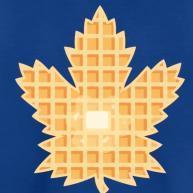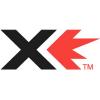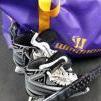Slate
Blackcurrant
Watermelon
Strawberry
Orange
Banana
Apple
Emerald
Chocolate
Marble
Slate
Blackcurrant
Watermelon
Strawberry
Orange
Banana
Apple
Emerald
Chocolate
Marble
Leaderboard
Popular Content
Showing content with the highest reputation on 02/24/19 in all areas
-
3 points
-
2 pointsWhy don't you just use the stock footbeds or superfeet.. cutting out the arch area will significantly change the fit of the footbeds and pretty much make it trash, Imo. Personally I like the feeling of my arch being supported but for me it doesn't cause pain. Also why are you using your fingers?
-
1 pointI thought I might start a little journal thing to document trying to figure out my pronation issues. Background I have been skating since I was about 10 or so and am 45. I played through high school and then men's league with a pretty good chunk of time spent not playing and just coaching. I started playing again about 9 months ago. I know that I tend to favor my left side. When I am just standing around, that is the default foot I will put my weight on. My right ankle always used to get issues with posterior tibialus when I would run. My right knee tracks inward (the left doesn't) when I do something like a one-legged squat. So for the running injuries I would try to strengthen the interior calf, do lateral band walks, lying lateral leg raises with weights, etc. That never really solved it. So that carries over to skating where it is harder to get on my right outside edge than any of the others and just casually standing I tend to default to my right inside edge and am pretty square on my left skate. I have read most of the articles on the internet about pronation in skating. I contacted a figure skating skate guy and he mentioned the MLX but said most skates now have little room for moving the holder. So I decided to try the unlaced skating approach and see what happens. I had been down two eyelets except when playing, then just down one. I am on old Bauer Supreme 7000s (yeah, I need new skates badly...). So we went skating yesterday and while I didn't take the laces out this time, the tongue was flopped pretty far out and barely touching where it wasn't out of the boot. Observations: -it took a while but I started to realize that even when I was on my right skate, my upper body was a little left, while when on my left skate I was more over it (defaulting to how I am when I am just standing around) -I seem to plant my left skate and drive more through the heel, my right skate I seem to be a little forward of that spot (yes, they have been recently profiled and should be the same, so it is probably attributable to me) -I was able to do crossovers and turns decently, backwards was a little harder because you tend to be on your toes more and the heel wants to lift out of the skate more -Muscles around the ankle and inside of my lower leg definitely started getting sore as the session went on, and they are a little sore today -When I played this morning laced up to one from the top, I seemed better on my right skate, more square on my edges and was able to get on the outside edge a bit more easily even after only one session Will continue to see how this goes and report back periodically.
-
1 pointSpeedplates don’t break in, they’re rigid once cooled. Removing the arch supports defeats the purpose. Presumably you have unusual arches. Do you know if they are very low or very high?
-
1 pointUse the leather strop on coated or polished steel. https://www.sparxhockey.com/products/sparx-honing-kit Haven't tried one, but this looks really cool. https://www.hockeylion.ca/collections/step-steel-hockey/products/step-blacksteel-clay-skate-stone
-
1 pointYes, my daughter started reffing this season in addition to playing and you have to register separately as an official. Also it's $70 or $75 for refs, but your clinic will be free, unless that changes this coming year.
-
1 pointI have Step Steel in my skates. I emailed and got a response from Sparx. The Sprx reply was informative, but I was unable to confirm anything from their reply. I think I’m going to check the level at my skate shop and go from there.
-
1 pointWarrior on their IG page showed Dumoulin of the Pens playing with a yet to be released Phantom QRE stick. Their ADV?
-
1 pointLet me shed a tear for the shop owners... Actually, no. If you’re a craftsman, like a SERIOUS craftsman who has worked on your art for decades, you have nothing to worry about. If you seriously feel threatened by a home sharpening machine, you can’t be all that great. Lets face it, 90% of pro shops suck, because 90% of them aren't staffed by people who REALLY know what they're doing. And in reality, if the pro shops near me weren't so terrible I never would have even considered something like the Sparx. Put simply: I wish there wasn’t a market for Sparx, but there is. As an analogy, I wish something like Uber wasn’t needed. But, since the cab industry is shit, it is thriving. Cabbies are all pissed off about Uber stealing their business. And then every time I take an actual Taxi I’m very quickly reminded of why I love Uber. Regardless, you'll get the occasional cabbie on MSH complaining about Uber stealing their rides...
-
1 pointUnfortunately, you have created a credibility problem for yourself which is why there's this back and forth on your review. Readers know (or can find out) who Russ Layton is and what his credentials are. They are public here: https://www.sparxhockey.com/pages/team. But your identity is not clear. It seems you hadn't ever posted here before but showed up a few days ago to share an opinion for the first time. You say you're an engineer and a professional skate sharpener. But you also in the same breath you said the sparx edge checker is crap because the lines are too far apart. I needed to confirm you were speaking about the same edge checker I own because the one I have has lines close enough together to get a very accurate reading. So I couldn't make any sense of your comment. I have to question your credentials once you put out a nonsense statement like that. I hope you understand, its not personal. But when you make comments about a product and you don't have an existing reputation in the forum to be judged upon, you should expect to be challenged on the points that people can't make any sense of. Sparx's business model is an obvious threat to some guys with >$10K investments in traditional Blademaster and Blackstone stations. That's fine, there's a time and place for both setups. But play fair - if you want to point out any shortcomings in the Sparx product, base it on facts instead of opinions that don't hold up under scrutiny. colins (Hockey dad to two boys, rec hockey player and Sparx owner. I'm not an engineer. I do have a B.Sc in Computer Science. I'm not a professional skate sharpener. My edges are perfect, and I would put them up against anyone's).
-
1 pointJust so we're clear, @ZamboniFever is not a salesman. He's the founder/owner and is an engineer.
-
1 point@Hills Good point. Let me explain. When an edge checker shows a deviation of 1 line from perfectly level (e.g. 1 line up on the right side of the edge checker), the opposite side of the edge checker should also show 1 line of deviation in other direction (e.g. 1 line down on the left side of the edge checker). This reading shows a combined 0.001" up on the right and a 0.001" down on the left or a total of 0.002" of height difference between the left edge and the right edge. To put this measurement magnitude into perspective, I just used a micrometer to measure the diameter of an eyelash. The micrometer reads 0.00325". The fact that the Sparx Edge Checker can measure your edges, in a repeatable fashion, to a fraction of the diameter of an eyelash is pretty impressive - speaking merely from an engineering perspective. Also, the Sparx Edge Checker and the other popular one on the market have the same measurement resolution. The lines may have slightly different spacing because the widths of the edge checkers are slightly different. Hopefully this makes sense. Cheers, Russ
-
1 pointHello MSH'ers, This is Russ from Sparx. I'm hoping to be able to add some color around Skate Guru's review. This is a long reply so I had to clear out a couple hours on my schedule to write it which is my excuse for not replying sooner. Grab some popcorn and a comfy chair if you're going to read this one. Some background, we now have hundreds of shops using Sparx and our flagship install at New England Sports Center (NESC) in Marlbrough, MA has been using Sparx for 1.5 years now. They have sharpened 10's of thousands of pairs of skates on Sparx already. We work very closely with NESC and everything we learn there benefits all of our other customers. We also have an R&D lab in Boston where we run durability tests on all of our equipment. Sparx is built to last - both the consumer machine and the commercial machine. Now let's dive into each of the points Skate Guru (SG) makes in the hopes that I can provide a bit more detail. SG: Set up (9/10) - easy to set up right out of the box Sparx: If it's easy to set up right out of the box ... what would we need to do to earn a 10? The one thing we hear from nearly all of our customers is that they can go from receiving their Sparx sharpener to sharpening a pair of skates in 10-15 minutes without ever having sharpened a skate before in their life. I know I am biased but I might give Sparx a 10 on this one. SG: Adjustment (4/10): Problem is that the adjustment is in intervals and not graduated. So you are one click left or right and can not dial it in perfectly. Any experienced sharpener knows that CCM blades are wider than Bauer blades, Sparx: Adjustment intervals are graduated on purpose to make it clear to the user the exact amount they are adjusting. Each "click" translates to the grinding wheel moving in or out by 0.0015". This increment amount is more than enough resolution to position the grinding ring for even edges (note: moving the wheel in and out has a roughly 4:1 effect on edge height adjustment). For example, if a 1/2" ROH shows 0.002" of edge height misalignment (1 line up on the right side of the edge checker and 1 line down on the left) this requires the user to adjust the Sparx by turning the adjustment knob between 5 and 6 "clicks" - or moving the grinding wheel in or out by 0.008". This amount of accuracy in Grinding Ring movement is really impressive when you consider the alternative which is an iterative trail and error approach to alignment (like you get with traditional manual sharpening equipment). The comment "Any experienced sharpener knows that CCM blades are wider than Bauer blades" is just plain inaccurate. As I write this I am holding a Bauer LS2 and a CCM SB Stainless blade in my hands. I am measuring their thickness on a Fowler Micrometer with a reading out to 5 decimal points. The thickness of these two pieces of steel is statistically identical (0.1140"). Saying that CCM is wider is wrong and could be misleading to readers of this forum. What is true is that all steel varies in its thickness. This is especially true of Black Steel and Chromed Steel and the like. We will soon be posting the results of a study we're doing on steel thickness and this data is going to surprise a lot of folks. Stay tuned to our Facebook page or our website for that post soon. The beauty of Sparx, and one of the main motivations for starting Sparx, was to build a product that doesn't care about the variations in steel thickness. This variation is what makes manually sharpening skates so difficult and time consuming and full of opportunity for people to make mistakes or be lazy. The centering skate clamp of Sparx, which is the exact same clamp design and hardware for both our consumer and pro machines, puts the blade over the center of the grinding wheel every time. SG: Ease of use (10/10) - could train staff to use this thing in 5 min. Very easy and simple to use. Any player over age 10 could handle it safely. Sparx: Thank you. We had ease of use as one of our most important design criteria when building Sparx. SG: Speed (7/10) - I can sharpen a pair of skates faster, and I really take my time to make sure they are perfect. Advantage is you can set it and leave and work on other things. About 7 min a pair with changing the skates out. Sparx: This one really depends on the user and the type of install. Take the home user. I am an adult league hockey player and I have a first year bantam player at home. Both of us sharpen every time we skate and we use 2 cycles per skate. A cycle on Sparx is about 45 seconds. This means I spend a bit over 3 minutes each time I play to prep my or my son's skates. This is about the time it takes me to put my gear in my hockey bag so I get both done at the same time. Now consider the pro user. New England Sports Center, an 8 rink facility in Massachusetts, has four Sparx Pro Sharpeners. With these sharpeners, they can sharpen 2 pairs of skates in under 4 minutes. All this while keeping the quality and consistency of the sharpening very high with any employee. This is a major win for their retail operation. Depending on the store size and volume, a Sparx commercial user will choose the number of machines that best serves their operation. For any retailer, losing even a small fraction of business on account of super long sharpening queues or inconsistent sharpening results is a terrible thing. Sparx makes running a commercial sharpening operation more streamlined. SG: Quality of equipment (4/10) - it is a heavy-ish unit, however heavy does not mean quality materials and construction. For a commercial piece of equipment, it looks and feels more like a toaster oven. The vacuum (that you must buy or they void your warranty) is a bucket mount POS that you can buy at home depot. They do include a hepa filter that is just a piece of foam (we are sucking up metal - the only thing needed is something that does not allow the metal particles to go in or near the motor). The motor is bigger than the one that comes with the home unit, and they say it is good for 3200 pairs a year. I dont believe that for a second, however I have no evidence or facts to support my statement. The edge checker is crap. The lines are very far apart, and the general construction is not good. The stone is also crap, but not really a big deal for a pro shop as we have plenty of high quality stones. Sparx: All things equal, heavy is typically a good thing when trying to reduce vibration in a piece of equipment. Look at any milling machine and you'll notice the cast iron base that it is sitting on. There are far lighter ways to construct a base but this help minimize vibration in the mill. SG is right that this doesn't automatically mean quality though. The main component in the Sparx chassis is an incredibly beefy and stiff extrusion. The rest of the chassis is a thick steel enclosure. This is where most of Sparx's weight comes from. The plastic components that dress-up the Sparx unit are just covers... similar to the way automobile companies trim the steel and aluminum structure of the car with plastic bumpers and ground effects for aesthetics. We wanted to make a skate sharpener that not only sharpened well but also looked beautiful so people would be proud to show their friends. The motors used in the commercial Sparx were tested to tens of thousands of sharpenings in our lab before they were ever released to customers. We plan to do a YouTube video soon that highlights our R&D labs and test chambers. We have a chamber where we can run 24 Sparx Sharpeners 24 hours a day 7 days a week. These ran continuously for months before we released the Sparx Pro machine this past summer. The sound of 24 Sparx machines running simultaneously was really awesome. If you consider Sparx vs our closest competitors, we stand behind our machines by NOT having a cycle limit on our commercial product warranty. Other machines limit their warranty to a cycle limit. SG commented "The edge checker is crap". We disagree and believe our edge checker is actually the most accurate on the market. Our measurement lines provide the same 0.001" edge height resolution that the other edge checkers have on the market. Our measurement lines are machined into the edge checker in the same machining setup as the blade slot which ensures that the relationship between the blade and the lines is the most precise that it can be. We also have a few features on our edge checker to preserve the integrity of the measurement lines and the measurement bar so that use doesn't cause the accuracy of the edge checker to deteriorate. Not so on competing edge checkers. We also QC every edge checker before it goes out with a "gold standard" blade to make sure it reads accurately. There are some nuances to blade thickness and taper which can throw off any edge checker - and we'll be putting out a post based on our research in this area very soon. SG: Quality of sharpening (3/10) – we tested many pairs of skates and had two of them tested on the ice. After much fine tuning and adjusting, we could not get a single pair to come out with level edges at both ends of the skate. Not out by much, but out enough that I would never let them leave my shop that way. Part of the issue is the click adjustment setting, and the other is that I think the rail the motor and disk runs on was not straight. Not out a lot, but enough that skates were not level at both ends. You could get one end level but not the other. Click it one adjustment the other way, and it would do the exact same thing the other way (vice versa). One pair tested on the ice was by a coach and he said they were fine and felt no difference. The other was tested by a Bantam player, and he knew right away that the edges were out. The disk leaves a very heavy burr (compared to a standard sharpening wheel) along the entire edge of both sides of the blade. This can be removed with a course stone with extra passes. With standard sharpening a fine hone works great. The hollow itself does have a little bit of chatter. Probably about the same as traditional sharpening. However, if you make a slower last pass and / or use finishing oil or wax, traditional sharpening has a far superior blade finish. This was a brand new in the box demo unit (we were the first test). Maybe this was a bad one, or maybe this is normal for the Sparx. Either way the quality was not good enough for me to actually send a pair back out over the counter to a paying customer. Sparx: There is a lot of stuff to comment on here. First, there are NHL teams putting players on the ice in NHL games with Sparx. These pro hockey players have the 10,000 hours of skating experience to make them the best in the world. SG is telling us a couple funny things here. The first, "I would never let them leave my shop that way" is just totally false. We have visited dozens and dozens of shops and heard this exact same claim. When we then go and randomly grab a pair of skates from a shop's finished sharpening pile they almost always have some amount of uneven edges. Then comes the excuses about why this pair or that pair... come on. Respectfully, the same goes for NHL guys sharpening. When someone says they never let a pair go out that aren't perfectly level don't listen to them. Skates are perfectly level when within 0.001" of perfectly level. Trying to get them more level makes no sense. The accuracy of every part in the tolerance stack to make the edge height measurement exceeds the accuracy of the exactness you're going for. This is engineering 101. Blade thickness taper alone is such a major factor in this edge height measurement. The second comment that needs to be addressed is "One pair tested on the ice was by a coach and he said they were fine and felt no difference. The other was tested by a Bantam player, and he knew right away that the edges were out." Really? So NHL players can't tell, the coach you sharpened for can't tell, but this 13-14 year old Bantam player is proof positive that Sparx is inaccurate. Hmmmm. Seems like we might be jumping to a conclusion from a very small sample set. The comment about a Sparx leaving a burr that is bigger than a traditional vitrified bonded wheel is something we can't argue. I would have to say on average, I do wind up working out more burrs with Sparx than I do with a traditional wheel. The reason is for this highlights a few aspects of a traditional sharpening wheel that could be problematic. The bonded wheel of a manual sharpener is consumed by the skate blade during the sharpening (put your hand in the swarf of a traditional sharpener and you'll feel the wheel dust flying off the wheel as it sharpens) and the blade itself digs into the wheel and the burrs are taken off by the wheel. This means two things that might not be good... even though there is less of a burr. The first is that the ROH on a bonded wheel is constantly changing. When dressed to a 1/2" ROH, a bonded wheel holds that ROH accurately for a couple rotations of the wheel hitting the skate steel. The ROH is then getting altered in the process of sharpening. This means inconsistent ROH from pass to pass and skate to skate. The Sparx grinding rings are precision machined steel substrates with a single layer of superabrasive coated onto them. The ROH doesn't change from the 1st pass to the last pass on a Sparx Grinding Ring. The second is that the edges are being dulled by the traditional grinding wheel as it wraps around the steel as it wears and removes the burr in the process. With Sparx you do need to, on occasion, put a few more seconds into deburring but this isn't a big deal and we suspect in the end the burrs are equally removed from both sharpening types. SG: Cost of unit (4/10) – cost of the commercial unit including vacuum, edge checker, pick guard, all 3 blade holders for loose steel, and a 3 pack of stones is $3244 CDN. If you run a busy pro will need all of those things. One scary thing is they do sell a 2 year and 3 year add on warranty? Sparx: Our costs are shown on our commercial website here. https://www.sparxhockey.com/pages/commercial-homepage I wish we could do something about the USD/CAD exchange rate but that is beyond our control at Sparx. We sell the add on service plans in the same manner that nearly all products do. The sharpener is warranted, as I mentioned above, for unlimited cycles in the base time period. If you want to add calendar years to this coverage this is an additional charge for peace of mind for a business that desires it. Many of our commercial customer love Sparx for all of the labor flexibility benefits and the ability to sharpen many more pairs of skates with fewer resources. These customers often want to buy additional insurance so that,if they ever have a problem with their Sparx machine in years down the road, we will support them in a white-glove fashion. These extended service plans provide that insurance and peace of mind. Again, this is a very common practice with durable goods such as our product. SG: Practicality for a pro shop (5/10) – It has some good points and some bad. Good is ease of use and training staff. Bad is quality of sharpening and cost of each sharpening. As a back-up machine to a regular sharpener it might have some value if it produced quality sharpenings. As a stand-alone machine in a pro shop no chance. There are too many variables it can not accommodate for. Bent blades, differing thickness of blades, nicks, gouges, changes in hollows, bent holders, loose blades, etc. For home use on 1 to 5 pairs of skates all at the same hollow it would probably be ok. Sparx: We already have 100's of commercial users. NESC here in MA sharpens more than 10 times as many skates as SG does per year and they use Sparx as their primary equipment. Hard to argue with that. Bent blades should either be straightened or replaced... independent of sharpening equipment. Different thickness is accomodated for by the Sparx centering clamp. Nick, gouges - easy to address with Sparx. The commercial Sparx machine also has cross grinding (possible on the commercial machine due to the external vacuum). Changes in hollows - easy with Sparx. We have 24 ROH types including flat bottom profiles. Bent holders, loose blades - should be fixed... independent of sharpening equipment. All of the arguments put forth here do not provide any basis on which to reject Sparx as a skate sharpening machine option for anybody - proshop or home user. I hope this helps anyone considering Sparx for Home or Commercial Use. Please reach out to us at help@sparxhockey.com if you have any more questions. Cheers, Russ







